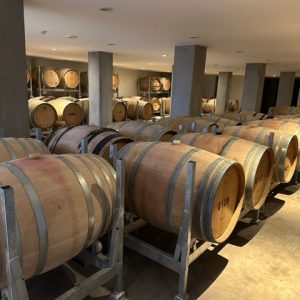Japan’s unique grapes
Yesterday I visited some wineries in Katsunuma, in the Kofu basin of Japan’s Yamanashi prefecture. This is the birthplace of the Japanese wine industry, and my visit was quite a revelation. I learnt that Japan’s leading grape varieties (“cepage” in French) are sort of indigenous to Japan.
Japanese white wine can be made from “Koshu”, which has distinctive rose-colored berries, and has grown in Japan for more than 1000 years. The actual origins of Koshu are a mystery, like many things in Japan.
It may have been introduced into Japan by traders from the Silk Road. It may then have joined forces with some indigenous grapes to generate a hybrid. Some even claim that Koshu is indigenous to Japan, although the latest scientific research suggests that Koshu is descended from Europe’s Vitis vinifera vine species. Koshu is believed to have been growing in the Katsunuma area for more than a thousand years.
Traditionally, Koshu is grown in the over-head pergola method of vine training (see photos). Up until the 21st Century it was common practice to make sweet wine from Koshu. Nowadays more dry wines are being produced, occasionally in sparkling form.
Many Western wine buffs look down on Koshu for its apparent lack of complexity and richness. It may indeed have a light body, but it does have many qualities like its strong minerality, restrained flavors of white peach and citrus, and its general elegance and subtlety . Not surprising Koshu fans recommend its pairing with Japanese cuisine.
A red grape variety, “Muscat Bailey A”, also has a curious history. It is a deep pink-skinned grape variety used to make light red wines in Japan. Muscat Bailey A was in fact bred in the 1920s by Kawakami Zenbei, the “grandfather” of Japanese wine. Zenbei had been struggling to find the right grape variety for the Japanese climate ever since founding his Iwanohara winery in 1890.
Seeking a wine grape that could withstand the freezing conditions, he experimented with cross-breeding varieties. The result, after many years of experimentation, was Muscat Bailey A – a disease-resistant variety that buds sufficiently late in the season to avoid frosts in spring and ripens sufficiently early to escape those in autumn.
Muscat Bailey A generates light, elegant red wines, which can also be a perfect accompaniment to Japanese cuisine.





